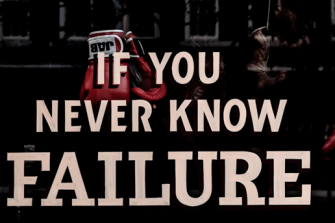Comfort Trap 1: Strategic planning
Strategy and planning get conflated but there is typically a default to ‘planning’ because planning is a thoroughly doable and comfortable exercise. Strategic plans tend to have a consistent structure: a relatively lofty vision/mission, a list of initiatives the organisation is going to carry out, and an assessment of what the initiatives will cost. This means the strategic plan dovetails nicely with the annual budget but does nothing to explain what the organisation chooses not to do or why.
Martin suggests that this kind of strategic planning not only works for managers but for their boards. Somewhat cynically he suggests it is safer for a board to supervise ‘planning’ than to encourage ‘strategic choice’.
Comfort Trap 2: Cost-based thinking
As costs are mostly under a company’s control, they can be planned for with relative confidence. However, planners run into trouble when they try to treat revenue the same way. The fundamental difference is that revenue decisions belong to customers, not to the company. Revenue cannot just magically appear. Trying to plan it distracts from the strategist’s much harder job of finding ways to acquire and keep customers.
Comfort Trap 3: Self-referential strategy frameworks
Here Martin invokes Henry Mintzberg, another of our favourite thinkers about the strategy process. In particular, he highlights the distinction Mintzberg makes between deliberate strategy, which is intentional, and emergent strategy which is a company’s response to a variety of unanticipated events.
Mintzberg is concerned that managers overestimate their ability to predict the future and to plan for it in a precise and technocratic way. Instead, he urges managers to watch carefully for changes in their environment and to make course corrections in their deliberate strategy, accordingly. However, even here, as Martin points out, managers are likely to default to ‘comfort’. They are more likely to view the future as so unpredictable and volatile that strategy choices should wait until the future becomes sufficiently clear. This gives them an excuse to wait for others to make the difficult strategic choices, see which are succeeding, and try to follow.
Escaping these traps
The boards of companies that fall into these traps tend to be very comfortable with their planners and spend a great deal of time reviewing and approving their work. Board discussion tends to focus on how to squeeze more profit out of existing revenue rather than how to generate new revenue. Performance metrics tend to be concerned with finance and capabilities rather than those that deal, for example, with customer satisfaction.
Because these traps are rooted in people’s natural aversion to discomfort and fear, Martin suggests the only remedy is to adopt a discipline about strategy making that accepts the need to experience some angst. This, he says, requires the strategy-making process to conform to three basic rules:
1. Keep the strategy statement simple.
Focus on the key choices that influence revenue decision-makers (i.e. the customers). Two choices determine success: which customers to target (the where-to-play decision) and how to create value for those customers (the how-to-win decision). These strategy choices can be described on one page. They will keep the discussion grounded and make managers more likely to engage with the organisation’s strategic challenges and less likely to retreat to their planning process comfort zone.
2. Recognise that strategy is not about perfection.
As strategy is primarily about increasing revenue rather than reducing cost, perfection is an impossible standard. Boards need to reinforce the notion that strategy involves a bet. At its best, strategy shortens the odds of a company’s bets. Until boards accept and promote this notion to their management teams, they will get planning instead of strategy – and lots of excuses later about why the (planned) revenue was not produced.
3. Make the logic explicit.
The only sure way to improve the hit rate of strategic choices is to test their logic. It is critical, therefore, to write down what you believe about your customers, about the evolution of your industry, about competition, and about your capabilities. As events unfold you will be able to quickly see when and how the strategy is not producing the desired outcome. You will be able to make necessary adjustments—just as Mintzberg envisaged.
These rules do not mean that activities such as planning and cost management are unimportant. They determine, for example, whether the sought-after-revenue can be obtained at a price that is profitable for the company.
While applying the rules does mean that the fear of making strategic choices may diminish, that is only good up to a point. Martin suggests that if a company is completely comfortable with its choices, it is probably missing the signs of important changes in its environment.
Apart from the challenges he sets out, we like Martin’s analysis for another reason – it fits well with what we have said before about the limitations of strategic plans in a governance context.








